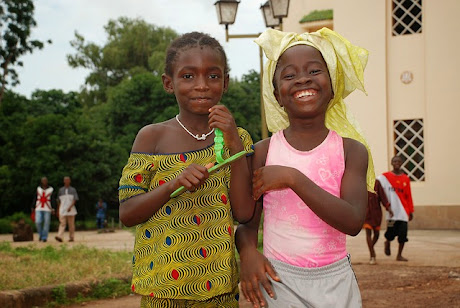- The XIVth Dalai Lama

In the Montessori environment, children make connections with humans throughout the ages by learning that all people have the same common needs, regardless of when or where they lived. Maria Montessori divided the common needs of people into two categories: spiritual and material.
While both are important, she felt that spiritual needs, or those having to do with the psyche, intellect, and the soul, were the driving force of human activity. She considered material needs to be necessary as the means of support for spiritual development.
The Common Spiritual and Material Needs of Humans - Montessori Values

Spiritual Needs
Dr. Steven Pinker of Harvard University tells us that three things set humans apart from other animals: language, complex cooperation with non-family members, and technological intellect. (PBS, 2009) The first two are explored in Montessori’s concepts of spiritual needs such as religion, art, and culture.
In their search for enlightenment, humans have always searched for spiritual answers about life, death, and the universe. Prehistoric people worshiped the sun and moon, practiced burial rites, and performed rituals safeguarding fertility, life, and death.

In much the same way, people have documented their existence through art. Early civilizations embellished everyday items such as pottery and jewelry using visual art. And the existence of the cave paintings in Lascaux, France suggests that prehistoric art also served as a means of communication. Not limited to visual art, the creation of music, literature, body art, and clothing express the human need to create and communicate. The combination of religion and art helps form culture.
Material Needs
Technological intellect, or our ability to create things, is unique to humans. We create shelter to harbor us from the elements and fierce animals. We develop defenses against our enemies and to keep us from falling prey to wild beasts. We investigate and use foods to nourish us and to make medicines that heal our sick. We have learned to clothe our bodies for protection and as adornment. And we have created varying means of transportation to move us from one place to another.

As much as possible, NAMC’s web blog reflects the Montessori curriculum as provided in its teacher training programs. We realize and respect that Montessori schools are unique and may vary their schedules and offerings in accordance with the needs of their individual communities. We hope that our readers will find our articles useful and inspiring as a contribution to the global Montessori community.
© North American Montessori Center - originally posted in its entirety at Montessori Teacher Training on Friday, November 1, 2013.
© North American Montessori Center - originally posted in its entirety at Montessori Teacher Training on Friday, November 1, 2013.

0 comments:
Post a Comment
Have questions or comments? Let us know what you thought about this article!
We appreciate feedback and love to discuss with our readers further.